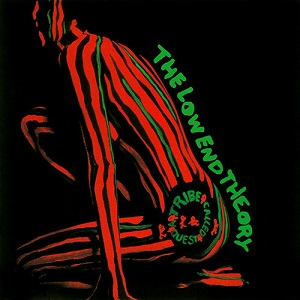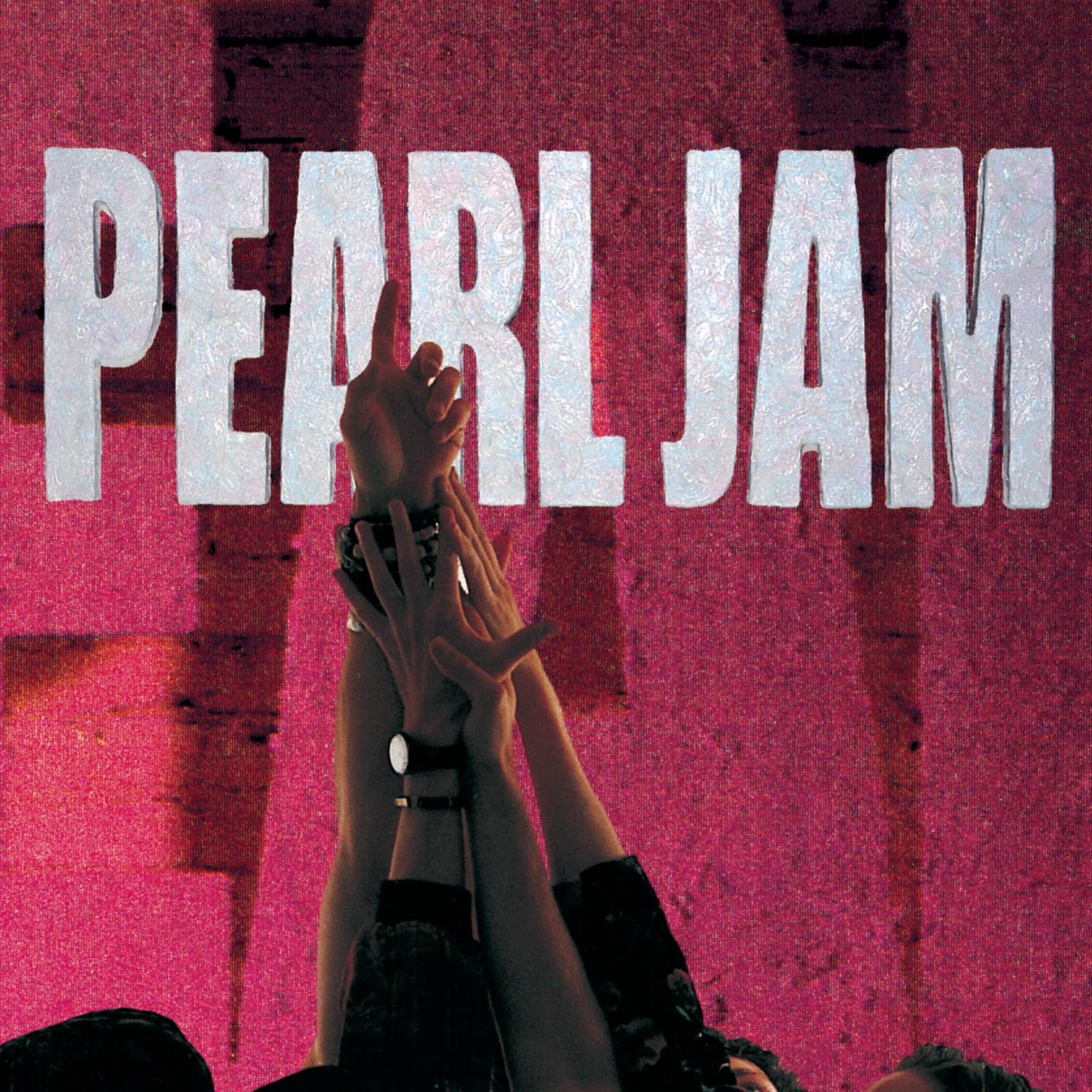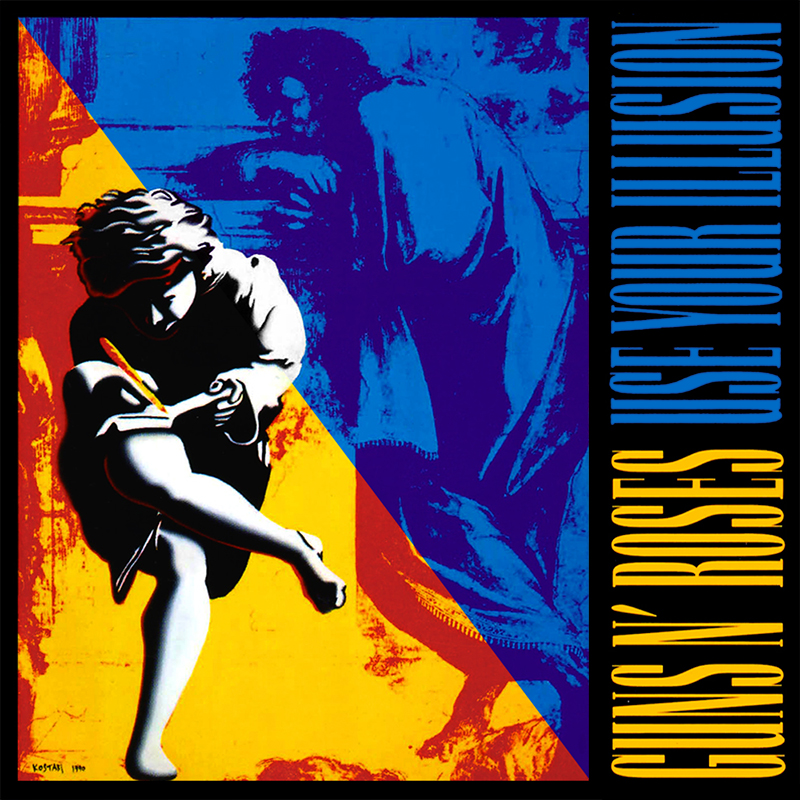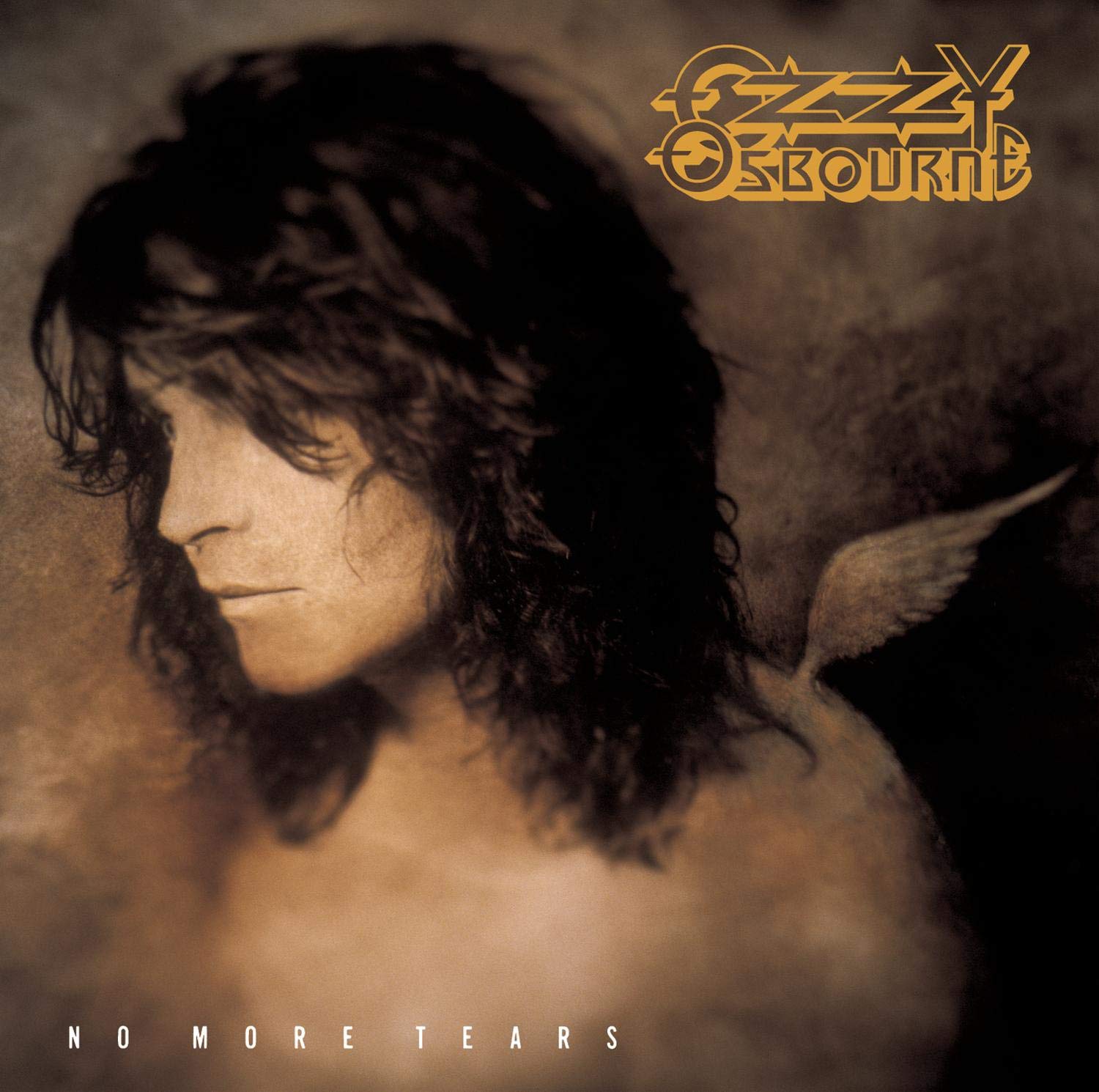Looking Through Time: 1991 Albums

A Tribe Called Quest – “The Low End Theory”
As hip-hop’s rise began in the late 1980s, many subgenres were spawning as a result of the genre’s popularity.
One of the creations was jazz rap, a smoother style that embraced the works of artists like Miles Davis and John Coltrane, stepping away from the hard-hitting, boom-bap sound that acts like LL Cool J and Run-DMC had popularized.
While groups like De La Soul and Jungle Brothers were viewed as the founding fathers of the subgenre, it was the New York-based group A Tribe Called Quest that mastered the sound and made it their trademark style.
Members Q-Tip, Phife Dawg and Ali Shaheed Muhammad went from close friends to the talent behind 1991’s Afrocentric “The Low End Theory,” which was the group’s magnum opus and bar-setting project for what jazz rap should be.
Tribe’s status rose following their 1990 debut, “People’s Instinctive Travels and the Paths of Rhythm,” with tracks like the Lou Reed-sampled “Can I Kick It?” creating a tranquil, warming sound of elation.
One year later, the group returned with a more focused, nuanced style. Leave it to leader Q-Tip, a perfectionist of an artist, to create a more polished product.
As both a rapper and a producer, Tip’s sampling of prior generations of music established the perfect tone for the album: a sense of nostalgia.
Tip’s slow, deep vocals pair perfectly with Phife’s high-pitched, faster approach, acting as a rap duo yin and yang combo.
The chemistry between the two parties allows for a fair breakdown of time on the mic, in which each artist prevents himself from becoming too prominent and overstepping their boundaries.
Hit track “Check the Rhime” acts as the perfect showcase of this as Tip and Phife, as each share verses filled with stellar penmanship and a braggadocious sound.
The album’s iconic track “Scenario” goes beyond Tribe, featuring numerous up-and-coming artists, most notably a young Busta Rhymes, starting what would become a prominent career in music.
“The Low End Theory” serves as Tribe’s homage to the music that influenced them. It’s a sophisticated standout in a genre originally characterized by hard-hitting sounds. —Joe Eckstein

Pearl Jam – “Ten”
In 1990, Seattle’s greatest grunge band formed when guitarist Stone Gossard and bassist Jeff Ament teamed up with singer=songwriter Eddie Vedder to write music in a dingy basement.
A year later, Pearl Jam’s “Ten” would be released to critical acclaim and massive commercial popularity. The record helped define a generation, and it is considered to be one of the greatest debuts of all time.
Eddie Vedder’s polarizing, growling vocals are one of the most standout aspects of the record, and they helped Pearl Jam stand out from other grunge bands of the time. His vocals have been recreated by several subsequent acts, like Creed, Nickelback and Stone Temple Pilots, but none have matched the original.
Lyrically, the record is memorable, creative and impassioned. Vedder is full of self-doubt, but this doubt allows the listener to find some comfort knowing that they’re not alone; people who thought they weren’t good enough or that they were different could fit in.
“Ten” addresses society’s problems and touches on topics that are still of contention decades later. On “Jeremy,” school shootings and suicides are discussed, while on “Alive,” grief and appalling actions to deal with that grief are at the forefront.
Vedder uses his voice as an instrument, and on songs like “Oceans” and “Black,” his vocalizations cry out in beautiful tones. One can hear the passion and emotion in his voice even without him saying any real words.
Nearly every track has incredible guitar breaks and solos accredited to Mike McCready and Stone Gossard. They take influence from another Seattle great, Jimi Hendrix. Each band member perfectly plays off each other, creating insane grooves and professional sound.
Standout tracks instrumentally are “Even Flow” and “Porch,” in which guitars are shredded and tension and release are perfectly balanced, creating an immaculate form of raw energy.
Every single song stands out for unique reasons, with credit due to producer Rick Parashar, who helped the Seattle sound grow.
“Ten” peaked at No. 2 on the Billboard 200 charts, and went 13x Platinum in the United States. “Ten” also ranks No. 209 on Rolling Stone Magazine’s list of the 500 greatest albums of all time.
Through its distinctive vocals, quality songwriting and sheer talent of each band member, Pearl Jam’s “Ten” stands the test of time as a revolutionary record, forever changing the course of music. —Caelan Chevrier

Guns N’ Roses — “Use Your Illusion I” and “Use Your Illusion II”
The biggest act of the ‘80s and ‘90s, Guns N’ Roses dropped their album “Use Your Illusion I” and its counterpart “Use Your Illusion II” on Sept. 17, 1991, before going on their “Use Your Illusion” world tour, blessing their fans with two albums filled with iconic hits.
Many argue that this joint album release is nothing in comparison to their iconic debut “Appetite For Destruction,” but the inclusion of lifelong hits like “November Rain” and “Estranged” from “Use Your Illusion I” and “Civil War” from the “Use Your Illusion II” say otherwise.
“November Rain,” in particular, is an incredible piece of music. The song is built on beautiful vocals from Axl Rose, a stupendous piano demo, and an epic guitar solo, making for one of the best power ballads in music history.
This joint release was incredibly successful, with “Use Your Illusion I” selling 685,000 units and “Use Your Illusion II” selling 770,000 units in the first week.
Due to their abundance of rock classics, many coming from these two albums, Guns N’ Roses hold a special place in many generations’ hearts. The group’s story is not close to one of perfection, but the “Use Your Illusion I” and “Use Your Illusion II” albums carry weight and significance for millions of people. —Savannah Scarborough

Nirvana – “Nevermind”
1991 can be marked as America’s introduction to mainstream grunge. The catalyst behind this introduction was arguably the most influential album of the ‘90s, not only over the landscape of music as a whole but over a generation of teenagers who seemingly felt like they would never live up to the expectations of their overachieving parents.
“Nevermind,” Nirvana’s second LP and first with a major label, took the country by storm. Aided by the smash hit “Smells Like Teen Spirit,” which has a strong argument for being the Gen X anthem, “Nevermind” caused the country to agree collectively that the glam metal era of rock music was over. It was time to trade in the hairspray for flannel and ripped jeans.
The powerful riffs and strong bass lines make it clear why this album was Seattle’s perfect export to introduce the rest of the country to the sound that was dominating the Pacific Northwest for quite a while. Kurt Cobain’s passionate grunts and yells made for an authentic sound that resonated with the youth of the country. It was also easier to connect with than the glossy rock that had been dominating the charts around this time.
The first six tracks on this record could easily be classified as essential grunge cuts, ranging from the slightly groovy “Come as You Are” to the soft-verse, loud-chorus structure of “Lithium” that made Nirvana a household name across the country.
Can one imagine bands like Pearl Jam, Soundgarden and Stone Temple Pilots succeeding in the pop lexicon without “Nevermind” offering the template of what rock music can sound like?
“Nevermind” made a whole generation of teenagers feel less alone and allowed for many of the bands that would dominate the ‘90s to receive their due recognition.
What else can one say about an album that has been hailed as one of the most important rock records of all time? Oh well, whatever, nevermind. —Paul Martin

Ozzy Osbourne – “No More Tears”
From the rise of grunge rock, to the golden era of hip-hop, to the mainstream successes of bands such as Metallica, 1991 proved its worth in the music industry. The year was especially a milestone for heavy metal artist Ozzy Osbourne with his album “No More Tears.”
Being his second-best-selling album and including the Grammy-winning track “I Don’t Want to Change the World,” “No More Tears” showcased Osbourne’s insane way of grabbing the attention of not only his fans but also the outside world through his pure shock-and-awe style.
A great example of this is the title song “No More Tears,” with its striking music video showcasing the animosity that goes into Osbourne’s work, all while covering the grisly topic of stalking and torment.
Another milestone to note is that this was the first album Osbourne recorded fully sober after abusing alcohol and drugs for years.
“No More Tears” is also the first album not to have a demonic title or cover art. Dubbing the tour for this album as “No More Tours” with the intent of retirement, Osbourne quickly returned with another tour titled “Retirement Sucks.”
“No More Tears” is a prime example of how the ‘90s, while also giving rise to many new genres and bands, showed that heavy metal and music veterans like Osbourne were still going as strong as ever. —Colton Pleslusky

Boyz II Men – “Cooleyhighharmony”
The world was first introduced to the R&B group Boyz II Men with the release of their debut album, “Cooleyhighharmony,” on April 30, 1991.
Boyz II Men is known by audiences for using a distinct combination of R&B, soul and new jack swing genres in their music. The members of Boyz II Men were also known for their a cappella harmonies and heartfelt ballads.
Interestingly, the quartet had all three male voice parts covered with one baritone, one bass and two tenors. They took this opportunity to feature all four members as soloists throughout different songs rather than having a permanent lead singer with the others singing backup.
“Cooleyhighharmony” featured six singles, including “Motownphilly,” “It’s So Hard to Say Goodbye to Yesterday,” “Uhh Ahh” and “Please Don’t Go.”
The other two singles, “End of the Road” and “In the Still of the Night (I’ll Remember),” were not a part of the original album but were included on the 1993 U.S. reissue.
Boyz II Men’s first ever single and one of their most successful songs to date, “Motownphilly,” peaked at the No. 3 spot on the U.S. Billboard Hot 100 in 1991 and ended the year at No. 11 overall. “It’s So Hard to Say Goodbye to Yesterday” peaked at No. 2.
The album itself peaked at the No. 3 spot on the Billboard 200 the year of its release and was also Billboard’s No. 1 R&B/hip-hop album in the U.S. in 1991.
Even 29 years after the release of “Cooleyhighharmony,” Boyz II Men is still working in perfect harmony today. —Sarah Simpson
Joe Eckstein is a junior majoring in broadcast journalism. To contact him, email jojoeck62@gmail.com.
Caelan Chevrier is a freshman majoring in journalism. To contact him, email cjc6789@psu.edu.
Savannah Scarborough is a freshman majoring in digital media and journalism. To contact her, email svs6992@psu.edu.
Paul Martin is a junior majoring in telecommunications. To contact him, email phm5095@psu.edu.
Colton Pleslusky is a junior majoring in telecommunications. To contact him, email csp5289@psu.edu.
Sarah Simpson is a junior majoring in film-video. To contact her, email sus816@psu.edu.
About the Contributors

Colton Pleslusky
Fourth-Year / Telecommunications
Colton S. Pleslusky is a fourth-year from Aliquippa, Pennsylvania majoring in telecommunications at Penn State. He is a director and writer for the CommRadio Arts & Entertainment Department as well as the host on Nittany Stories and a co-host on Nittany Record Club alongside Emily McGlynn. He does behind the scenes tasks, including directing, producing, programming and more for the Centre County Report. To contact him, email .(JavaScript must be enabled to view this email address) or .(JavaScript must be enabled to view this email address).

Paul Martin
/

Savannah Scarborough
Freshman / Digital Media and Journalism

Sarah Simpson
Senior / Film-Video
Sarah Simpson is a senior from Irwin, Pennsylvania majoring in film-video, and minoring in Journalism and Spanish at Penn State. She is a member of Centre County Report. She is also the president of Penn State Network Television (PSNtv), Penn State’s student-run television network, as well as the director for PSNtv’s weekly news broadcast PSN News. She has interned with the Pittsburgh Post-Gazette as a photo/video intern and Penn State Athletics as a live video production intern. If you’d like to contact her, email .(JavaScript must be enabled to view this email address).

Caelan Chevrier
Third Year / Marketing & Journalism
Caelan Chevrier is a third-year student in the Smeal College of Business at Penn State University studying marketing and broadcast journalism with the goal of graduating with a bachelor’s degree in four years. His career goal is to spread informative, meaningful, and entertaining content across various platforms and to be a positive impact on the community. He has also spent time working at WWE in the communications department and writing for The Westport Local Press in his hometown of Westport, CT. If you’d like to contact him, email him at .(JavaScript must be enabled to view this email address) or .(JavaScript must be enabled to view this email address).

Joe Eckstein
Fourth year / Broadcast Journalism
Joe Eckstein is a fourth year for Nazareth, Pennsylvania majoring in broadcast journalism. He is a contributor for the CommRadio. He also is the opinion editor for The Daily Collegian. He was a former intern with The Morning Call newspaper in Allentown. To contact him, email him at .(JavaScript must be enabled to view this email address)







